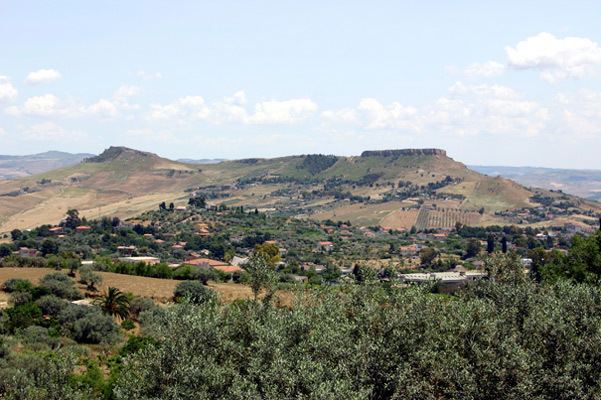 | ||
Location | ||
Sito archeologico di sabucina
The archaeological park of Sabucina (officially, Sabbucina), located on the mountain of the same name near Caltanissetta (8 km to the north east), is an archaeological site in Sicily. The area contains settlements ranging from the Bronze Age (20th-16th century BC) to the Roman period.
Contents
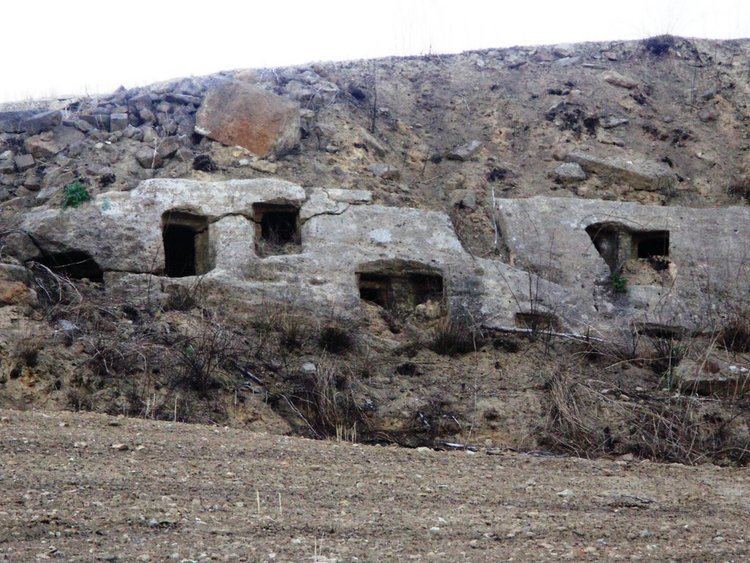
History
Archaeological evidence allows the phases of habitation to be divided as follows:

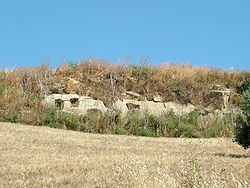
The original village has securely pre-Greek origins, it was constructed by the Sicans, who took advantage of the dominant position of the mountain over the Salso river valley.
Greek period
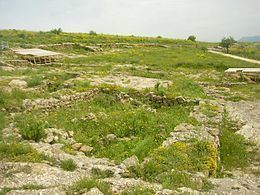
The first phase of the Greek settlement came in the 7th century. The centre consisted of rectangular habitations, with more space between them towards the summit of the mountain. In the 6th century BC, the city wall was built, which probably contained the entire inhabited area at that time. In the 5th century the settlement was destroyed, probably by Ducetius, who is mentioned by Diodorus Siculus. Reconstruction occurred in the second half of the century; the settlement received a new layout of streets and housing plots on a different orientation, and a new city wall with rectangular towers. This settlement was abandoned in turn at the end of the fourth century, probably as a result of the Agathocles of Syracuse.
Archaeological area
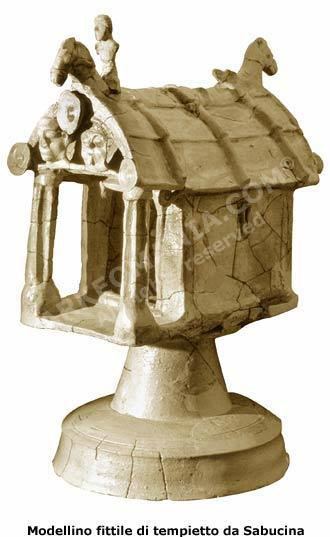
In the area at the bottom of the mountain are some Bronze Age grotticella tombs; other important discoveries include to a hut used as a shrine and the so-called Sacello of Sabucina, a terracotta model dating to the 6th century BC, found in the area of the necropolis, which depicts a small temple with a pronaos in antis and a pitched roof surmounted by two figures of cavalrymen and two gorgoneion masks decorating the tympanum. The sacello, with other discoveries, is now kept in the Regional archaeological museum of Caltanissetta.
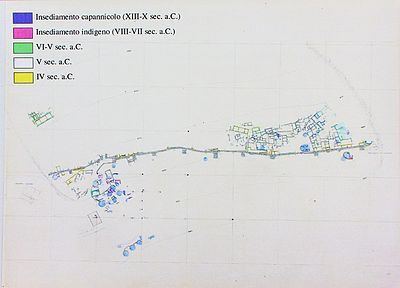
The discovery of this archaeological site is relatively recent; the first excavations only took place in the 1960s, when Piero Orlandini excavated the late Bronze Age huts, dating to the 13th-10th centuries BC. This was an important excavation, since Sabucina was the first village of this type to be identified in Sicily.
Today the site is accessible, thanks to a regulation of the Office of Cultural Heritage. As a reuslt of public order n.6262 on 11 July 2001 it became the regional archaeological park of Sabucina.
